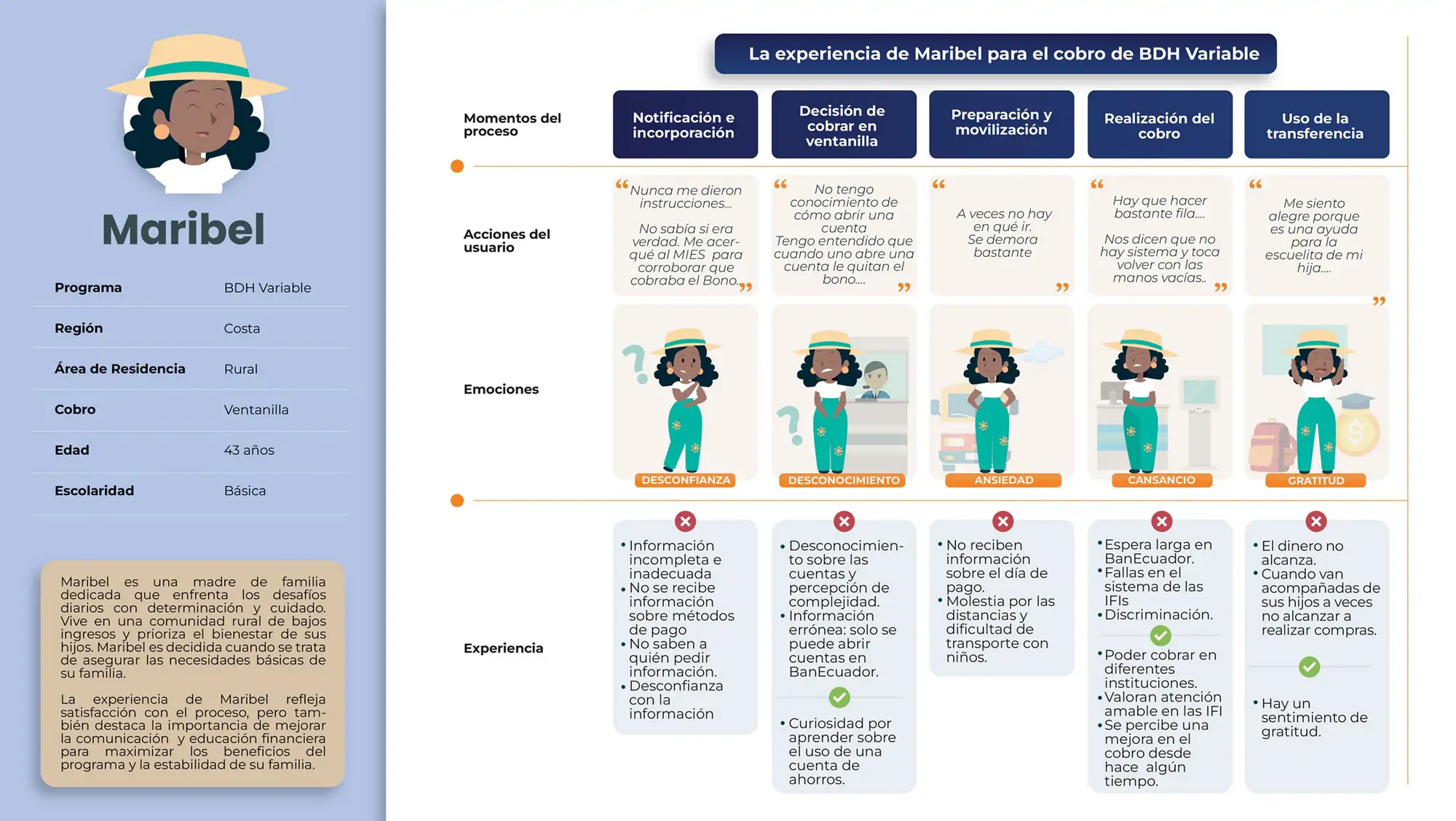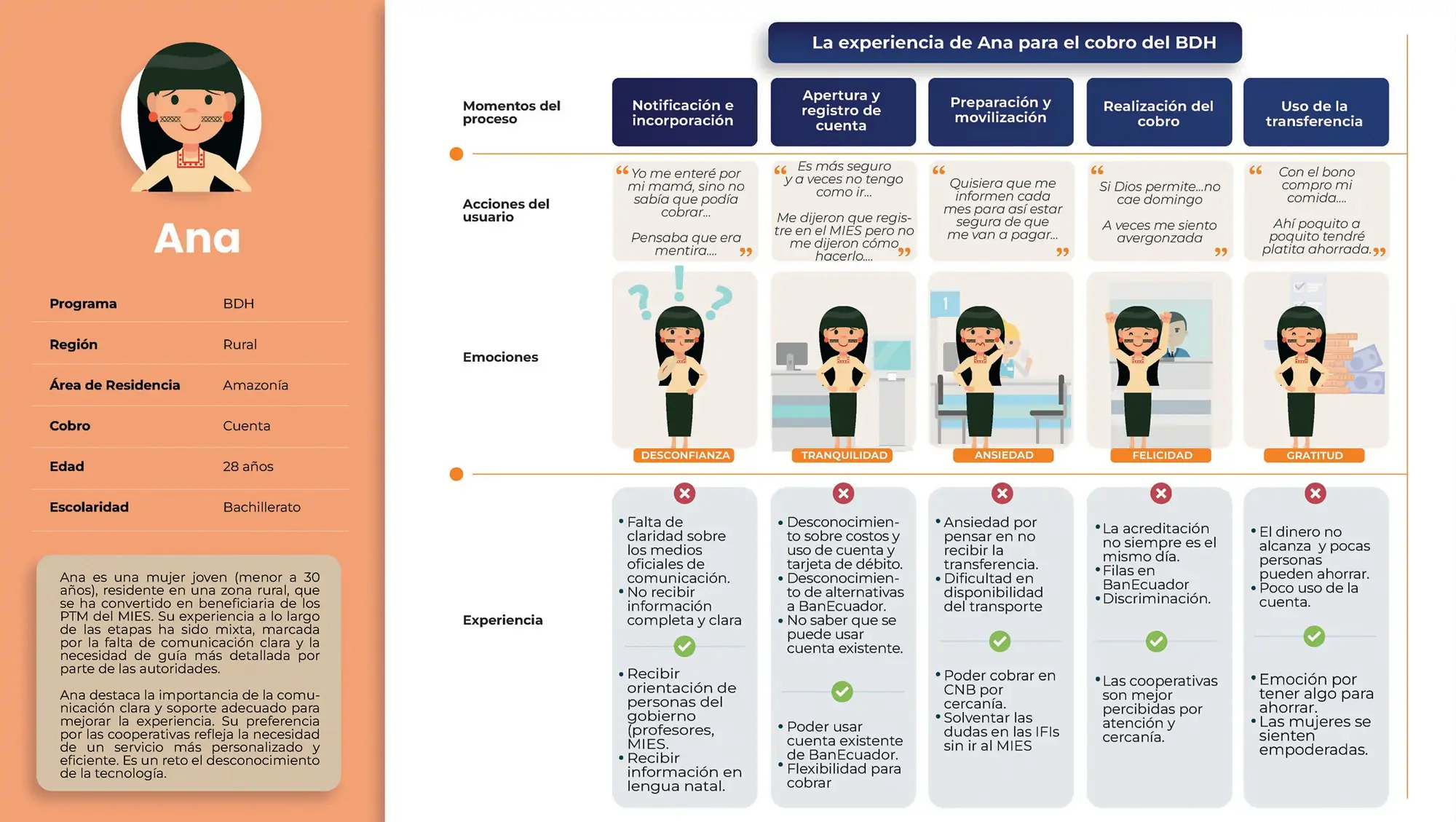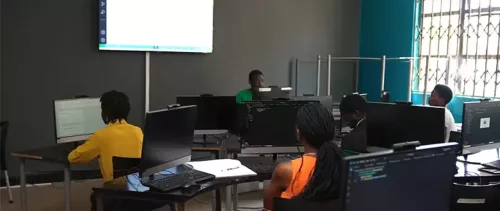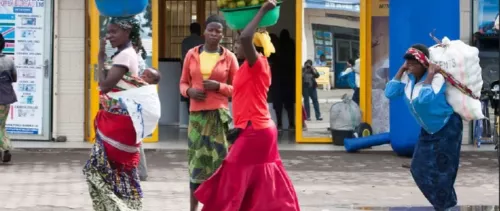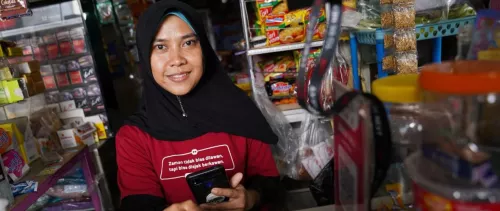
Photo: Adobe Stock
A recent World Bank study reveals the experiences and challenges of families receiving social transfer payments in Ecuador, illustrating how to orient the financial sector towards the needs of the most vulnerable.
More than 1.4 million people receive social transfer payments and pensions in Ecuador’s social protection system. For years, the vast majority of these beneficiaries have opted to receive their payments in cash rather than via an account at a financial institution, representing a missed opportunity for greater financial inclusion. What are the reasons for these preferences?
A recent World Bank study explored the user experience of beneficiaries throughout the social transfer payment chain. This user-centered approach allows us to understand how beneficiaries think, feel, and act, as well as the challenges they face. The study (in Spanish) defined “archetypes” of beneficiaries of different social programs and developed “Customer Journey Maps,” identifying points of dissatisfaction and satisfaction, based on qualitative research with more than 150 beneficiaries.
For example, Maribel, a mother living in the rural area of the Costa region and a beneficiary of the Human Development Grant, must prepare herself each month to travel at least 2 hours to reach the nearest financial cooperative to collect her bonus at the counter in cash. Although she feels comfortable with the friendly service of the financial institution staff, she arrives tired and anxious to know if she will be able to receive her payment that day. It is possible that the funds transfer hasn’t been made or there is no liquidity at the payment point, and she will have to return a few days later, having to incur time and financial expenses for her transportation again. Would it be better for Maribel to receive her bonus in an account and verify beforehand that the deposit was made before traveling? She has doubts because she has heard that if she opens an account, they will “take the grant away.”
Ana, a young woman living in the Amazon, found out she was a beneficiary through her mother, but she wasn’t sure because she hadn’t received any official communication from the social protection agency (MIES). When she inquired, she was told she had to open an account in a particular bank. She never knew that she could choose from over 200 financial institutions. Ana is aware of the flexibility that receiving her grant in an account gives her and that she could use the account to save.
Among the points of satisfaction experienced by beneficiaries, the study highlights a feeling of gratitude for receiving the grants and pensions and a positive perception of customer service in financial cooperatives.
However, the study identifies several points of dissatisfaction such as:
- Long journeys that generate significant expenses in money and time, especially in rural areas.
- Lack of clear, adequate, and timely communication between MIES and its beneficiaries throughout the payment delivery process.
- Distrust in the financial system, not feeling comfortable in financial institutions, facing discrimination from staff of financial institutions, fear of fraud or improper charges, and myths associated with opening an account.
- Low interest in accounts and debit cards due to lack of knowledge, unclear advantages, and associated costs.
- Low usage of the advantages provided by account-based payments as beneficiaries tend to use only branches on scheduled payment days rather than making greater use of ATMs and agents.
- Low knowledge of the complaints and claims mechanism and lack of incentives to file a complaint.
Among the recommendations for MIES, financial sector authorities, and financial institutions, the study highlights:
- Expanding the network of access points through the expansion of agent networks, in particular among financial cooperatives.
- Strengthening MIES communication towards its users and generating financial capacities by improving notification mechanisms, developing financial education materials, creating protocols and standardizing messages that integrate gender and intercultural approaches, and improving knowledge of beneficiaries’ rights as financial consumers.
- Promoting the opening and use of customer-centric accounts for beneficiaries by seeking agreements with financial institutions that allow offering basic accounts associated with payment methods and exploring incentives for their opening.
The study results have helped authorities to orient their digitalization efforts around the needs and preferences of social transfer beneficiaries. Recent advances are encouraging: currently, 75% of beneficiaries receive their payments in an account compared to 26% in 2022. The authorities hope to achieve near-universal digitalization by end-2024. The study findings can guide efforts to address these “last mile” beneficiaries, who may be particularly reluctant or face difficulties in switching to account-based payments and help ensure that newly banked beneficiaries use financial services in a manner that supports their financial well-being and economic empowerment. Finally, these efforts have also supported broader government-to-person digital payment efforts, including recent fuel subsidy compensation schemes for taxi drivers.
